When addressing pelvic health, our focus often fixates solely on the pelvic floor, inadvertently overlooking the state of the pelvic organs. But what happens when the bladder stops relaying information accurately or functioning optimally? What is the link between having to pee very often and the pelvic floor?
This article aims to demystify the intricacies of the bladder's physiology and storage capacity. We will delve into the disruptive behaviours and irritants that can contribute to conditions like high urinary frequency, overactive bladder (sometimes known as small bladder syndrome), and urge incontinence. Moreover, we will explore effective and practical strategies to address these issues and describe the role of neuroplasticity in implementing these solutions.
The communication pathway between the bladder and the brain
The bladder, the storage organ for urine, contains stretch receptors responsible for sending messages to the brain as it fills up. This communication lets us know it is time to urinate after reaching a specific threshold volume. Disrupting this well-coordinated mechanism by urinating out of sync with this signal can impact the bladder's storage capacity.
High urinary frequency
When we don't wait to reach the threshold volume, the bladder becomes accustomed to not being filled to optimal capacity. The receptors start relaying the message prematurely, and the bladder loses its ability to stretch to accommodate a greater volume of urine and becomes more sensitive.
This can lead to the perception of having a "small" bladder, which is actually due to reduced volume storage capacity and hypersensitivity. Additionally, the impact extends to the pelvic floor, which loses its strength to keep the "gates closed" when the bladder is fuller than usual, increasing the risk of leakage.
Low urinary frequency
On the contrary, if we wait too long and overfill the bladder despite the need to urinate, it becomes less sensitive over time. The body adapts, and the receptors take more time to relay the message to the brain.
While it may seem advantageous to store urine for longer, overburdening the bladder is detrimental to its proper functioning in the long term. It can lead to overdistension of the organ walls and increase the risk of urinary tract infections.
Paradoxically, overfilling the bladder makes it more difficult to empty afterwards. The increased strain on the pelvic floor compels it to sustain prolonged and forceful contractions in order to maintain the "gate closure" and prevent unintentional urine leakage. Consequently, the pelvic floor may face difficulty relaxing to open the sphincters for urine outflow. Furthermore, this situation might lead to hypertonic musculature, thus impeding effective bladder emptying.
Disruptive behaviours and irritants for the bladder
Not passing urine when needed often stems from a lack of attention to the body's sensations. Delaying bathroom breaks to fit a busy schedule, adhering to false beliefs, social constraints, or inherited habits from caretakers are common reasons. Additionally, inadequate liquid intake (either excessive or insufficient) significantly impacts voiding frequency.
Furthermore, certain daily actions can disrupt the proper functioning of the bladder, resulting in long-term harm. In the Bladder Care guide available in your tailored program, you will receive guidance on what to do and avoid. You can implement these pieces of advice in the Habits Tracker to avoid what can affect your bladder and prevent exposure to potential irritants that can disturb its sensitivity.
For example, a cystocele (bladder prolapse) can be considered an irritant, as the lack of bladder support can trigger stretch receptors. Other factors that may contribute to bladder dysfunction include infections, faecaloma, mass overgrowth, vulvovaginal atrophy, metabolic disorders, and more.
Don't underestimate the importance of adopting healthy bladder habits. Overlooking measures to maintain bladder health can result in long-term urine evacuation issues, such as difficulties passing urine easily and/or completely.
Overactive bladder
If you experience repetitive and unjustified urges to run to the bathroom, it is not just in your head! It might be due to an overactive bladder is a common condition that affects almost 11% of the world's population (455 million people).
Under normal circumstances, the detrusor muscle, which lines the inside of your bladder, contracts when you decide to void, squeezing the urine out. The sphincters, the "lock muscles" of the pelvic floor, automatically relax as a reflex to « open the gates » and allow the urine to pass. However, individuals with an overactive bladder experience urges due to uncontrolled and involuntary contractions of the detrusor muscle, even when the bladder is not full.
It causes sudden and urgent needs to pass urine and can result in accidental leakage, known as urge incontinence. As a result, individuals suffering from an overactive bladder find themselves needing to urinate excessively throughout the day. The urges are sometimes associated with specific triggers, such as hearing the sound of water or putting the key in the front door when coming home. The brain somehow associates these events with the act of passing urine, leading to the contraction of the detrusor. However, this is not the case for everyone, and urges can occur without any specific trigger.
While anyone can be affected by an overactive bladder, its prevalence increases with age, especially around menopause, with a peak occurrence at around 60 years old. If you are unsure whether you should be concerned about this condition, our thorough check-up can help you detect it and offer solutions tailored to your needs.
You can address an overactive bladder with behavioural changes. Your personalized program will help you manage and cope with this issue on a daily basis with a dedicated guide. You will learn techniques to suppress urges and, thus, reduce leakage risk and improve your quality of life. You will also discover how to anticipate and handle potential trigger situations. Additionally, if relevant, you will have access to bladder training to help you manage the high voiding frequency associated with an overactive bladder.
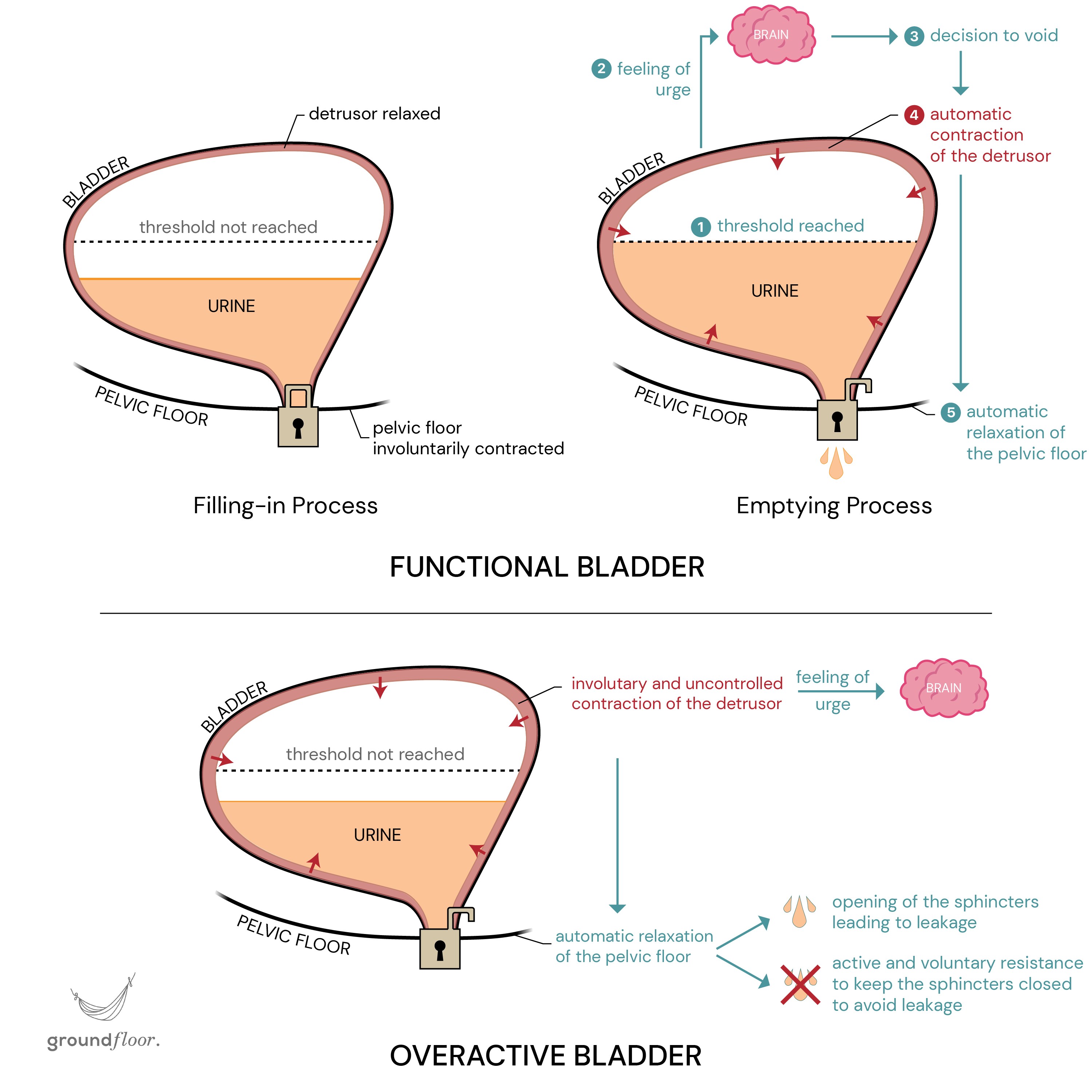
What is Bladder training?
Bladder training is a behaviour therapy aiming to readjust the optimal functioning of the bladder, helping to reduce or prevent inconveniences such as voiding frequency issues, urine leakage, urges, and dehydration. It's important to note that your pelvic floor's health is directly impacted by how you manage your bladder and bowel needs (and vice versa).
Bladder training offers a transformative opportunity for anyone seeking to enhance their bladder control and pelvic health. It is a versatile and effective option that doesn't exclusively address an overactive bladder. It is also beneficial for individuals experiencing bladder issues due to excessive or inadequate usage. For instance, it can be relevant for people with urinary frequency induced by painful bladder syndrome, also known as interstitial cystitis.
By incorporating bladder training into your routine, you can retrain your bladder to reach its optimal performance level, alleviate associated issues and improve your overall pelvic health. It is complementary to the Bladder Care Guide and habits tracker to empower individuals to develop healthier habits, ensuring better management of urinary functions and enhancing their quality of life.
Successful bladder training requires a personalized approach taking into account each individual's unique situation and personal habits. Ground Floor app utilizes the information collected during the check-up to create tailored bladder training programs that cater to the specific needs of each user. This interactive feature provides advice throughout the day on the voiding frequency and liquid intake. The process is straightforward and easy to follow, requiring only willpower and motivation to address habits that may have been ingrained for a long time.
Improve your bladder health with neuroplasticity
Our behaviour's impact on our body's functioning is a double-edged sword. As explained earlier, some habits can disrupt the harmonious coordination between the bladder's filling process and the need to pass urine. On a positive note, this also means that through lifestyle choices and behavioural changes, we have the power to improve our pelvic health.
Neuroplasticity, the brain's ability to remodel and adapt to repeated behaviours, plays a crucial role in this process. When habits are consistently practised over time, they become automatic and ingrained. This is why bad habits are challenging to break. However, through the same neuroplasticity process, we can retrain our body to function better by adopting healthier habits and letting go of the ones that no longer serve us.
To harness the power of neuroplasticity, four complementary features are available in the app: the Bladder Care and Urge Suppression Guides, the Habits Tracker, and Bladder Training. They are designed to support any individual who would benefit from behavioural changes. The habits tracker and bladder training allow for personalized and tailored adjustments, increasing the likelihood of successfully incorporating these changes into their routines.
Take the check-up test to assess the condition of your pelvic floor and bladder health, ensuring you are providing proper care and identifying any existing dysfunctions on time. Your detailed report will also determine if you are at risk of developing any issues in the future. If you feel overwhelmed by the abundance of information, fret not! Your tailored program will provide clear and straightforward guidance, requiring minimum effort from you and making the journey easy to comprehend and follow.
Share this article with your friends and help spread the knowledge together! ↓
Share this article with your friends and help spread the knowledge together! →




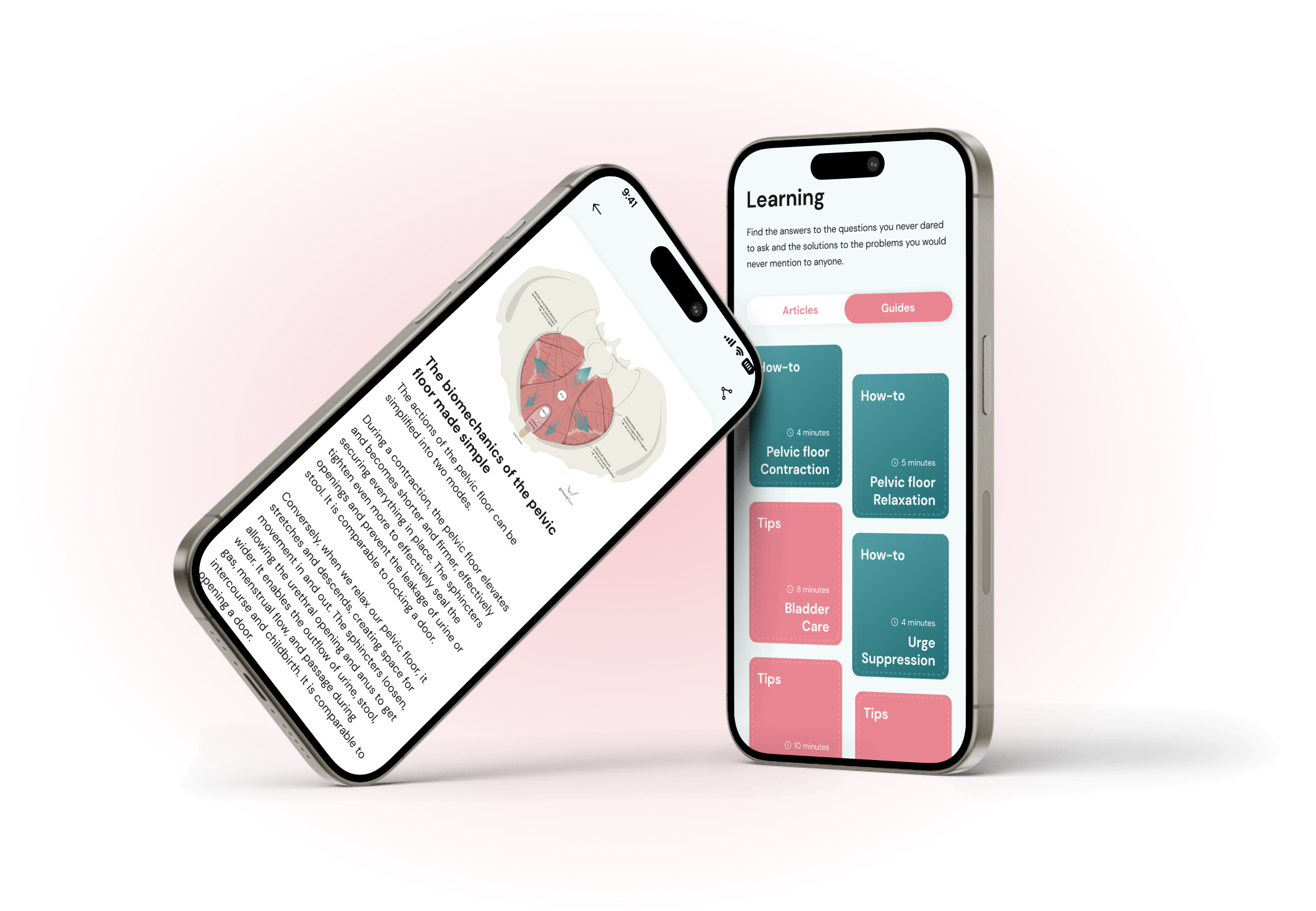
Download the app to learn more about this topic and receive tailored information about your pelvic health!


Related articles
4 min read
How pelvic floor training protects you from incontinenceDiscover your pelvic floor's vital role in maintaining bladder and bowel control. Learn how to care for it effectively to prevent unintentional leakage. This article will explore the mechanisms behind continence, define incontinence, highlight its impact on women's lives, and emphasise the importance of targeted solutions.
→ Read more
4 min read
Breathing with your pelvic floor and the connection with the coreDid you know that your pelvic floor is a key component of your core and a breathing muscle? If this statement surprises you, keep reading to explore the intriguing connection!
In this article, we will delve into the anatomy of the core and biomechanics of breathing. We will also discuss different breathing patterns, their effects on the pelvic floor, and the benefits of practising diaphragmatic breathing.
→ Read more

3 min read
Anatomy and functions of the pelvic floorToo many people have limited knowledge about the pelvic floor and its purpose, often associating it solely with urine leakage or childbirth. However, the truth is that the pelvic floor encompasses much more than that.
In this article, we will simplify the complex concepts of pelvic floor anatomy, functions, and mechanisms of action. Our goal is to make it easier for you to understand and appreciate the importance of this vital structure.
→ Read more

